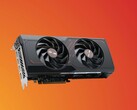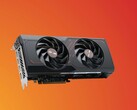Strix Point APUs, AMD’s follow-up to the Hawk Point chips, are expected to come out later this year with up to 4x Zen 5 cores, 8x Zen 5c cores, and a 16 CU RDNA 3.5 iGPU. Considering Zen 5 is reported to pack a massive performance improvement over Zen 4, Strix Point should bring plenty of horsepower to the notebook segment.
Giving us an idea about the Strix Point performance, an AMD APU with a "100-000000994-14_N" OPN has appeared in the Geekbench database with single-core and multi-core scores of 1,217 and 8,016 respectively (via Benchleaks). According to Wccftech, the OPN ID confirms that the AMD Engineering Sample is a Strix Point product.
Furthermore, the Strix Point ES features a total of 12 cores, 1 MB L2, 16 MB of L3, 32 KB L1 Instruction, and 48 KB L1 Data cache. The L2 and L3 cache sizes are seemingly in line with previous leaks which alleged 1 MB of L2 per core and 16 MB L3 for the Zen 5 CCX.
Strix Point performance
The Strix Point ES’ Geekbench scores of 1,217 and 8,016 may not seem like much initially but when we consider that the chip was running at a measly frequency of 1.4 GHz, they look much more impressive. As a comparison, the Ryzen 7 8845HS with its 8 cores and a 5.1 GHz boost frequency achieves respective single-core and multi-core scores of 1,875 and 11,802 per our database. The Strix Point even in its ES state and running at much lower clocks is only 35% slower in single-threaded and 32% slower in the multi-threaded scenario.
If we look at the Geekbench performance of the Strix Point from another angle, the scores paint a very exciting picture. Geekbench benchmarks a CPU by running it full throttle for a short while to compute a given workload. Naturally, this type of benchmarking depends heavily on clock frequencies. Therefore, if we scale the Strix Point scores under discussion in relation to the clock frequencies we can get an idea of the potential of the chip.
Assuming that the Strix Point ES was running at 5.2 GHz or 3.714 times the 1.4 GHz frequency, the chip would get a single-core score of 4,520 if the score scales linearly. Similarly, the sample would earn a multi-core result of about 29,774, putting it noticeably ahead of the desktop Ryzen 9 7950X (Buy it now on Amazon).
That said, the clock frequency is just one of many factors that determine the performance of a chip. There is no guarantee that the Strix Point APUs will reach the levels extrapolated here.
Nevertheless, the Geekbench results look promising and have us quite excited to test the APUs.
[GB5 CPU] Unknown CPU
— Benchleaks (@BenchLeaks) April 24, 2024
CPU: AMD Eng Sample: 100-000000994-14_N (12C 12T)
Min/Max/Avg: 1411/1414/1413 MHz
CPUID: B20F00 (AuthenticAMD)
Single: 1217
Multi: 8016https://t.co/vzGYJFaZpt





























